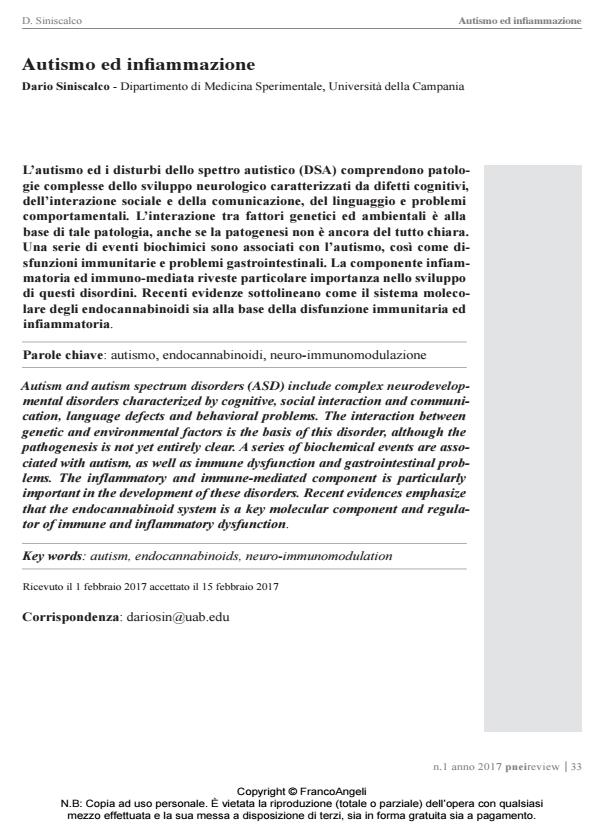Autismo ed infi ammazione
Titolo Rivista PNEI REVIEW
Autori/Curatori Dario Siniscalco
Anno di pubblicazione 2017 Fascicolo 2017/1
Lingua Italiano Numero pagine 8 P. 33-40 Dimensione file 1093 KB
DOI 10.3280/PNEI2017-001004
Il DOI è il codice a barre della proprietà intellettuale: per saperne di più
clicca qui
Qui sotto puoi vedere in anteprima la prima pagina di questo articolo.
Se questo articolo ti interessa, lo puoi acquistare (e scaricare in formato pdf) seguendo le facili indicazioni per acquistare il download credit. Acquista Download Credits per scaricare questo Articolo in formato PDF

FrancoAngeli è membro della Publishers International Linking Association, Inc (PILA)associazione indipendente e non profit per facilitare (attraverso i servizi tecnologici implementati da CrossRef.org) l’accesso degli studiosi ai contenuti digitali nelle pubblicazioni professionali e scientifiche
L’autismo ed i disturbi dello spettro autistico (DSA) comprendono patologie complesse dello sviluppo neurologico caratterizzati da difetti cognitivi, dell’interazione sociale e della comunicazione, del linguaggio e problemi comportamentali. L’interazione tra fattori genetici ed ambientali è alla base di tale patologia, anche se la patogenesi non è ancora del tutto chiara. Una serie di eventi biochimici sono associati con l’autismo, così come disfunzioni immunitarie e problemi gastrointestinali. La componente infiammatoria ed immuno-mediata riveste particolare importanza nello sviluppo di questi disordini. Recenti evidenze sottolineano come il sistema molecolare degli endocannabinoidi sia alla base della disfunzione immunitaria ed infiammatoria.
Parole chiave:Autismo, endocannabinoidi, neuro-immunomodulazione
Dario Siniscalco, Autismo ed infi ammazione in "PNEI REVIEW" 1/2017, pp 33-40, DOI: 10.3280/PNEI2017-001004